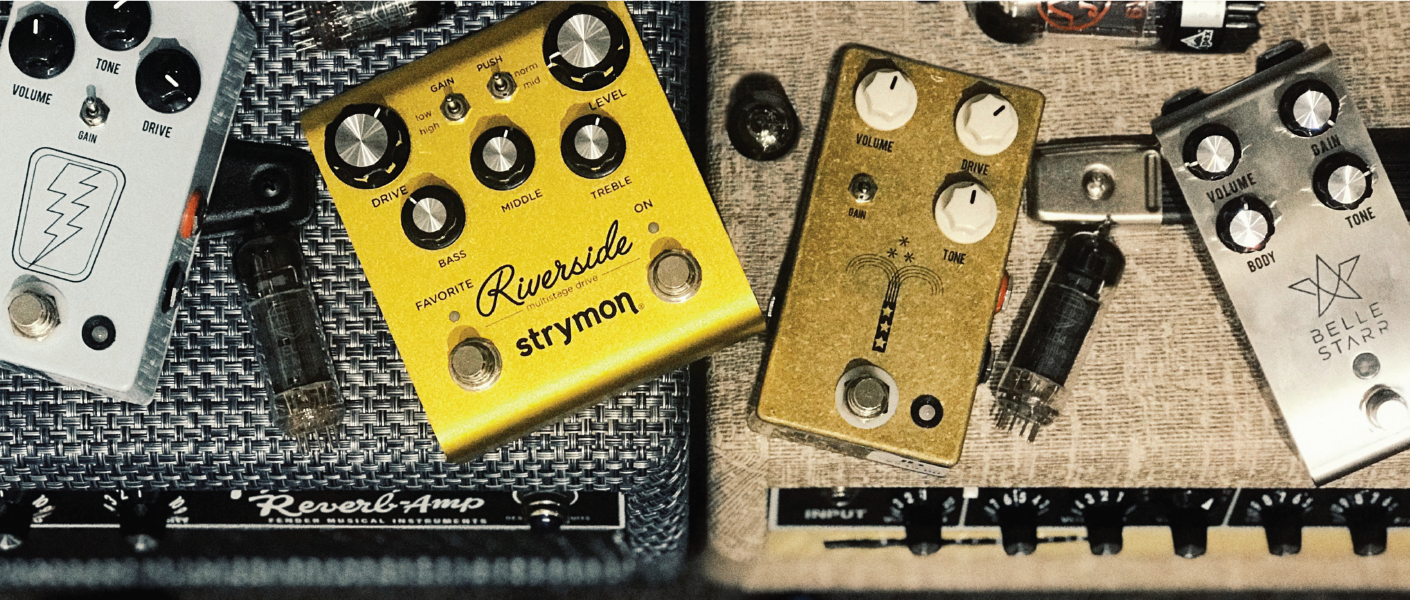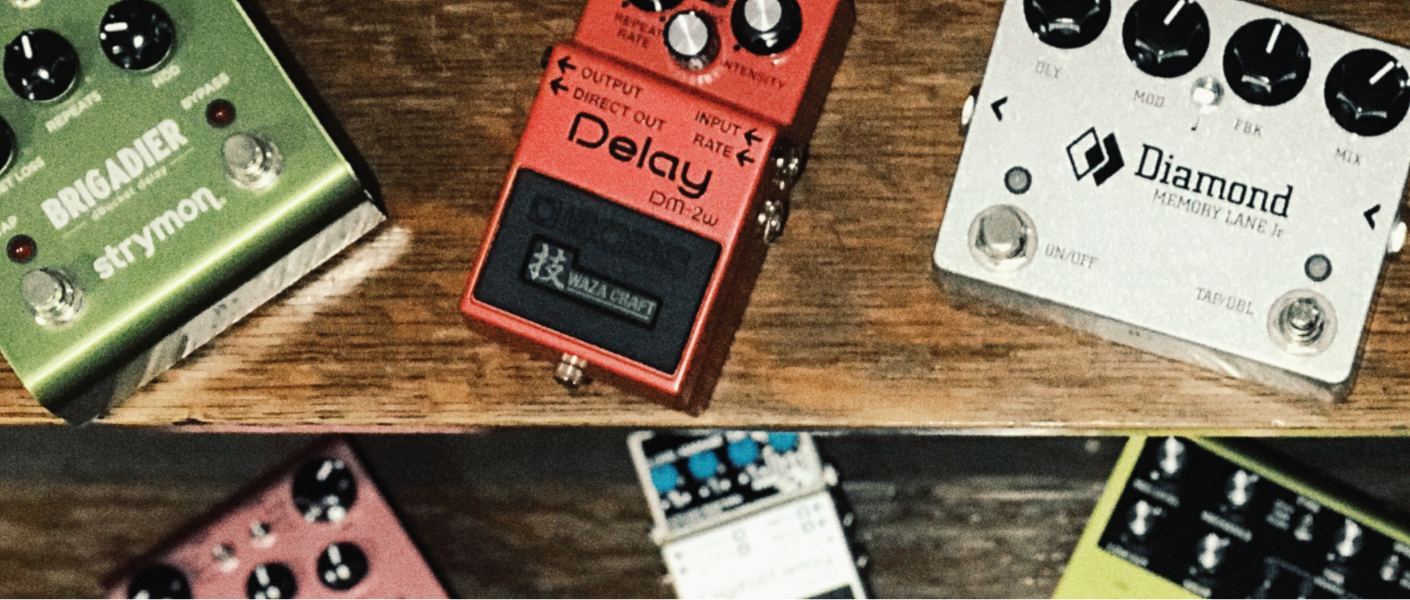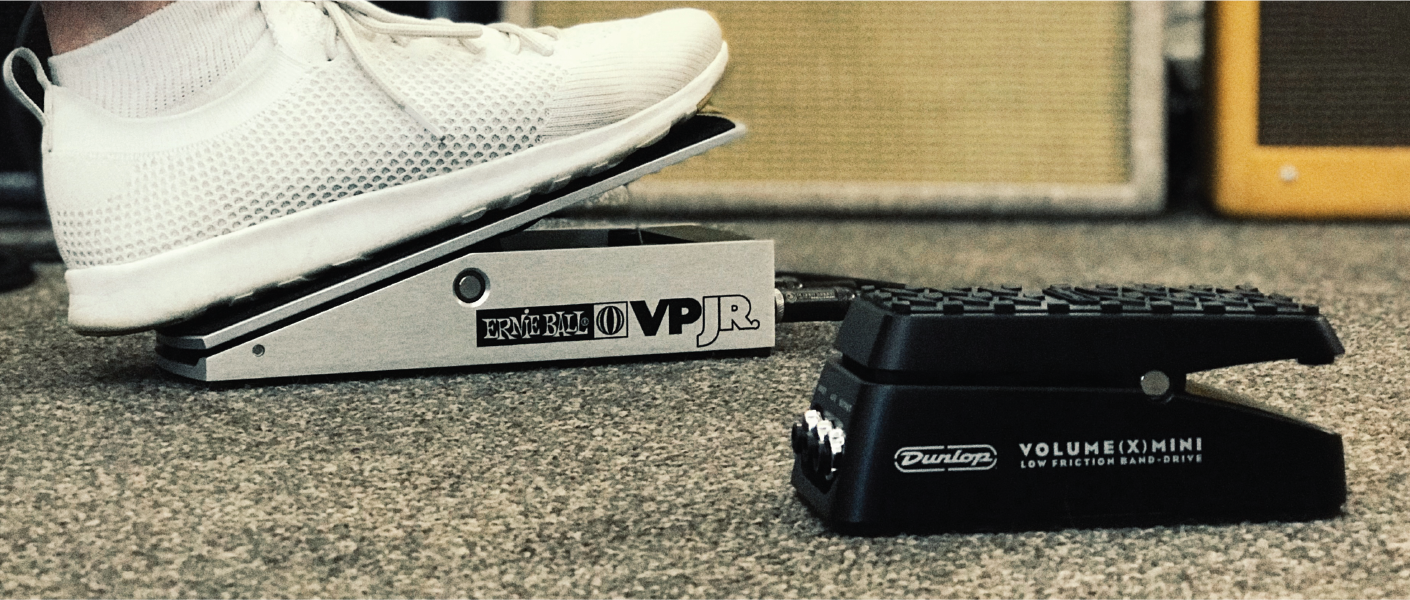Tim Wall - 29 / Jul / 2020
6 Essential Pedals For Your Pedalboard

If you've been playing guitar for a little while, you've likely started to look at different effects and ways to sculpt your sound to match the music you're playing, or to inspire you as you write your own music. While there's a wide range of categories of effects pedals, we're going to talk about some of the essential pedal types that are staples on any pedalboard.
Tuner

A tuner pedal is extremely handy to have on your pedalboard. It provides a quick and easy way to make sure you're in tune, on stage or at home, allowing you to activate it hands-free at the click of a button. Most tuner pedals also have the option of completely cutting your signal, so you and the people around you don't have to listen to the delightful sounds of an instrument being tuned.
Overdrive / Distortion

Overdrive and Distortion are quite different from one another, but can often seem to achieve a similar result if you're not sure what you're listening for.
Overdrive pedals are made to preserve the dynamic range and compliment the original sound characteristics of the amp while increasing the gain or "overdriving" the tubes. Overdrive generally provides a less saturated and warmer drive sound, often used in blues or rock music. Overdrive pedals will react differently between solid-state and tube amps.
Distortion pedals generally disregard the original sound characteristics of your amp. They "distort" and saturate the sound of your amp sound with their voice and equalization. Distortion is often desired by metal musicians because of its saturated, tight, and focused sound for fast playing.
Delay

A delay pedal takes the original sound being played and repeats it as often or as few times as you'd like. It allows you to either have a very subtle effect to fill space and expand your sound or can be a very prevalent feature with loud repeats in the guitar part being played. Some delay pedals will provide a straightforward approach with a few great options and controls like the TC Electronic Flashback, and others will allow you to save multiple presets, have a tap tempo switch, and give you a full range of control over your sounds like the Strymon TimeLine.
Reverb

Reverb pedals, often paired with delay pedals, mimic and exaggerate the natural reverberation that occurs when sound bounces off surfaces. Like the delay effect, It can subtly fill space in your playing, or it can be turned up to create large and encompassing ambient sounds to get lost in. Some reverb pedals will provide a straightforward approach with a few great options and controls like the Boss RV-6, and others will allow you to save multiple presets and give you a full range of control over your sounds like the Strymon Big Sky.
Volume

Like the tuner pedal, a volume pedal doesn't have its own effect on the sound. It provides a convenient way to adjust the guitar volume going to your amp while you're playing, rather than having to use up your picking hand to adjust it on the guitar. Many players pair it with a long delay and lots of reverb to get a swelling effect, first strumming the chord, then slowly increasing the volume so you only hear the resulting sound, leaving out the picking or strumming.
Pedal Power

Pedal power is a commonly overlooked subject when thinking about building a pedalboard. Underpowered pedals don’t perform to their full potential and can send you down a path looking for the right pedal when you really might only need proper power.
Using a daisy chain with the classic Truetone 1 Spot (NW1) to power a few small pedals can be a quick and simple solution up until a point, but you can run into issues with pedals that put noise into the power line, passing it on to the other pedals, adding more unwanted noise in your sound.
Power supplies provide reliable, clean, and isolated power to each pedal, reducing that unwanted noise. They are generally fairly bulky, so most players will mount them underneath the pedalboard so it doesn’t take up too much real estate on top. Companies like Temple Audio design their pedal boards to fit most power supplies underneath.
Before you decide on a power supply, check what kind of power your pedals require, usually either 9v, 12v, or 18v.
If you liked this article, feel free to check out our other posts in our Learn section!










